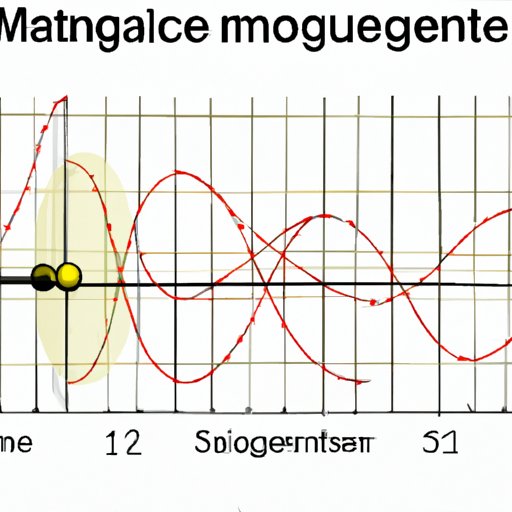
Introduction
Vectors are a fundamental concept in mathematics and are widely used in many fields, from physics to computer graphics. Vector magnitude, or the length of a vector, is an important aspect of vectors as it serves as the measurement of how strong or weak a vector is. Understanding how to calculate vector magnitude is crucial in various applications and can aid in simplifying complex calculations.
Mathematical Formula for Vector Magnitude
The formula for finding the magnitude of a vector is:
|v| = sqrt(v1^2 + v2^2 + … + vn^2)
This equation can appear intimidating at first, but it is relatively straightforward when broken down step by step.
Tutorial on How to Find Vector Magnitude
To find the magnitude of a vector, follow these steps:
- Square each component of the vector
- Add up the squared components
- Find the square root of the sum
Let’s use the vector v = (3, 4) as an example:
(v1)^2 + (v2)^2 = (3)^2 + (4)^2 = 9 + 16 = 25
|v| = sqrt(25) = 5
It’s important to note that the order of the vector’s components does not matter as the formula squares each component before adding them together.
Applications of Vector Magnitudes
Vector magnitudes find use in various fields, including physics, engineering, and computer graphics. In physics, the magnitude of a vector can represent the force of an object or the distance it covers. Engineers use vector magnitudes when calculating the strength of materials or designing structures. Computer graphics rely on vector magnitudes to create realistic animations and 3D models.
Here are some real-world examples:
- Calculating the wind force acting on a bridge during construction
- Determining the force needed to launch a rocket into space
- In computer graphics, determining the intensity of light illuminating a 3D object
Tips for Simplifying Vector Magnitudes
Here are some strategies for making the calculation process easier:
- Break down the vector into its component parts and calculate each part’s magnitude separately
- Square the components of the vector and add them all up before taking the square root
- Use the Pythagorean theorem to find the magnitude of a two-dimensional vector
Breaking down a vector into its components allows for the use of the Pythagorean theorem to calculate the magnitude. For example, the vector v = (5,12) could be broken down into its components 5 and 12. Using the Pythagorean theorem, it can be calculated that the magnitude of the vector equals 13.
Common Mistakes to Avoid
Here are some common mistakes people make when calculating vector magnitudes:
- Confusing the direction of the vector with its magnitude
- Not squaring the components of the vector before adding them together
- Not using the square root function to arrive at the final answer
It’s important to remember that vector magnitude is a scalar quantity, meaning it only takes into account the vector’s length, not its direction.
Advanced Topics in Vector Magnitudes
The magnitude of a complex vector, or a vector with multiple dimensions, is calculated similarly to a two-dimensional vector, but requires more computation. In vector calculus, the magnitude is used to find the scalar component of a vector in a specific direction. This is useful in solving problems involving velocity, acceleration, and force.
Conclusion
Vector magnitudes are an essential aspect of vectors and can be applied in various fields. By following the mathematical formula and breaking down the vector into its component parts, calculating the magnitude can be made more manageable. Understanding the concepts discussed in this article can aid in simplifying complex calculations and help solve problems across multiple fields.
Explore vector magnitudes further to gain a deeper understanding and explore their countless applications.




